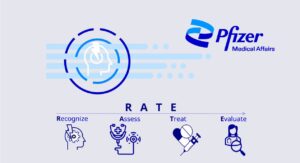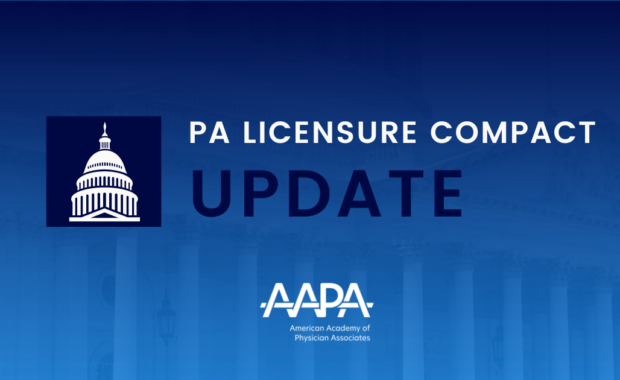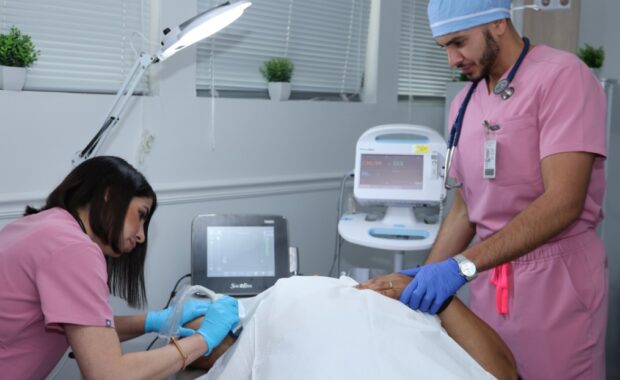Migraine Management Toolkit: A Comprehensive Guide for Diagnosis and Treatment Considerations
SPONSORED
 PAs play an important role in today’s healthcare landscape, functioning as critical partners in the diagnosis, treatment, and management of a wide array of conditions, including migraine. Understanding the nuances of migraine management is not only beneficial for enhancing patient care, but also essential for ensuring accurate diagnoses and effective treatment strategies. The Migraine Management Toolkit: Diagnosis and Treatment Considerations is a resource designed to help equip healthcare professionals like PAs when managing a patient with migraine.
PAs play an important role in today’s healthcare landscape, functioning as critical partners in the diagnosis, treatment, and management of a wide array of conditions, including migraine. Understanding the nuances of migraine management is not only beneficial for enhancing patient care, but also essential for ensuring accurate diagnoses and effective treatment strategies. The Migraine Management Toolkit: Diagnosis and Treatment Considerations is a resource designed to help equip healthcare professionals like PAs when managing a patient with migraine.
Why Focus on Migraine Management?
Migraine is a prevalent and debilitating neurological disorder, affecting over 1 billion people globally.1-3 In the United States alone, approximately 40 million individuals suffer from migraine, making it the second most common neurological disease in the country.3,4 Interestingly, migraine is about three times more common in females than in males, highlighting the need for tailored and informed care approaches.5,6
Migraine significantly impairs patients’ quality of life, disrupting sleep, daily activities, relationships, and overall enjoyment.3,7-9 The economic burden is substantial, with direct and indirect costs, including productivity losses, ranging between $18 million and $155 million annually in the U.S.10 Chronic migraine costs per person per year exceed $8,200, while episodic migraine costs are over $2,600.11 This economic impact underscores the importance of effective migraine management.
Despite advancements in understanding migraine pathophysiology and treatment, the condition remains widely underdiagnosed and often misdiagnosed.5 The average time between onset and diagnosis is estimated to be approximately 3.3 years.5 Patients with chronic migraine are 57% less likely to receive an accurate diagnosis compared to those with episodic migraine.12
The RATE Approach: A Framework for Effective Migraine Management
The toolkit introduces the mnemonic RATE (Recognize, Assess, Treat, Evaluate), which serves as a potential approach for healthcare professionals to help remind them about the diagnosis and management of migraine.
Recognize
When to suspect migraine in patients13:
- Recurrent headache of moderate to severe intensity
- Visual aura, nausea, and vomiting
- Family history of migraine
Assess
Use a combination of13:
- Detailed history taking
- Physical examination
- Screening for secondary headache and considering differential diagnoses
- Validated diagnostic and screening tools
Treat
Acute treatment13,14
- For patients with a confirmed diagnosis of migraine
Preventive treatment13,14
- For patients whose attacks significantly interfere with daily routines despite acute treatment
- For those who have frequent attacks, intolerance or contraindications(s) to acute treatments, or failure or overuse of acute treatments
Evaluate
PAs should play a role in the long-term management of migraine13
- It is important to evaluate the impact of the treatment plan on migraine
- Treatment plans should be revised and optimized for each patient, as appropriate
Your Role in Migraine Management
As a PA, you are uniquely positioned to impact the lives of migraine sufferers significantly. We invite you to explore The Migraine Management Toolkit: Diagnosis and Treatment Considerations.
Your role as a PA is crucial, and with the right tools and knowledge, you have the potential to make a significant difference in your patients’ health and quality of life.
References:
- GBD 2016 Headache Collaborators. Lancet Neurol 2018;17:954–76
- Stovner LJ, et al. J Headache Pain 2022;23:34
- GBD 2017 US Neurological Disorders Collaborators. JAMA Neurol 2021;78:165–76
- Law HZ, et al. Plast Reconstr Surg Glob Open 2020;8:e2790
- Lipton RB, et al. Headache 2022;62:122–40
- Lipton RB, et al. Headache 2018;58:1408–26
- Gibbs SN, et al. Headache 2020;60:1351–64
- Martelletti P, et al. J Headache Pain 2018;19:115
- Buse DC, et al. Headache 2019;59:1286-99
- Yucel A, et al. Am J Manag Care 2020;26:e403–8
- Messali A, et al. Headache 2016;56:306–22
- Buse DC, et al. Headache 2021;61:628–41
- Eigenbrodt AK, et al. Nat Rev Neurol. 2021;17(8):501-514
- Ailani J, et al. Headache. 2021;61(7):1021-1039



